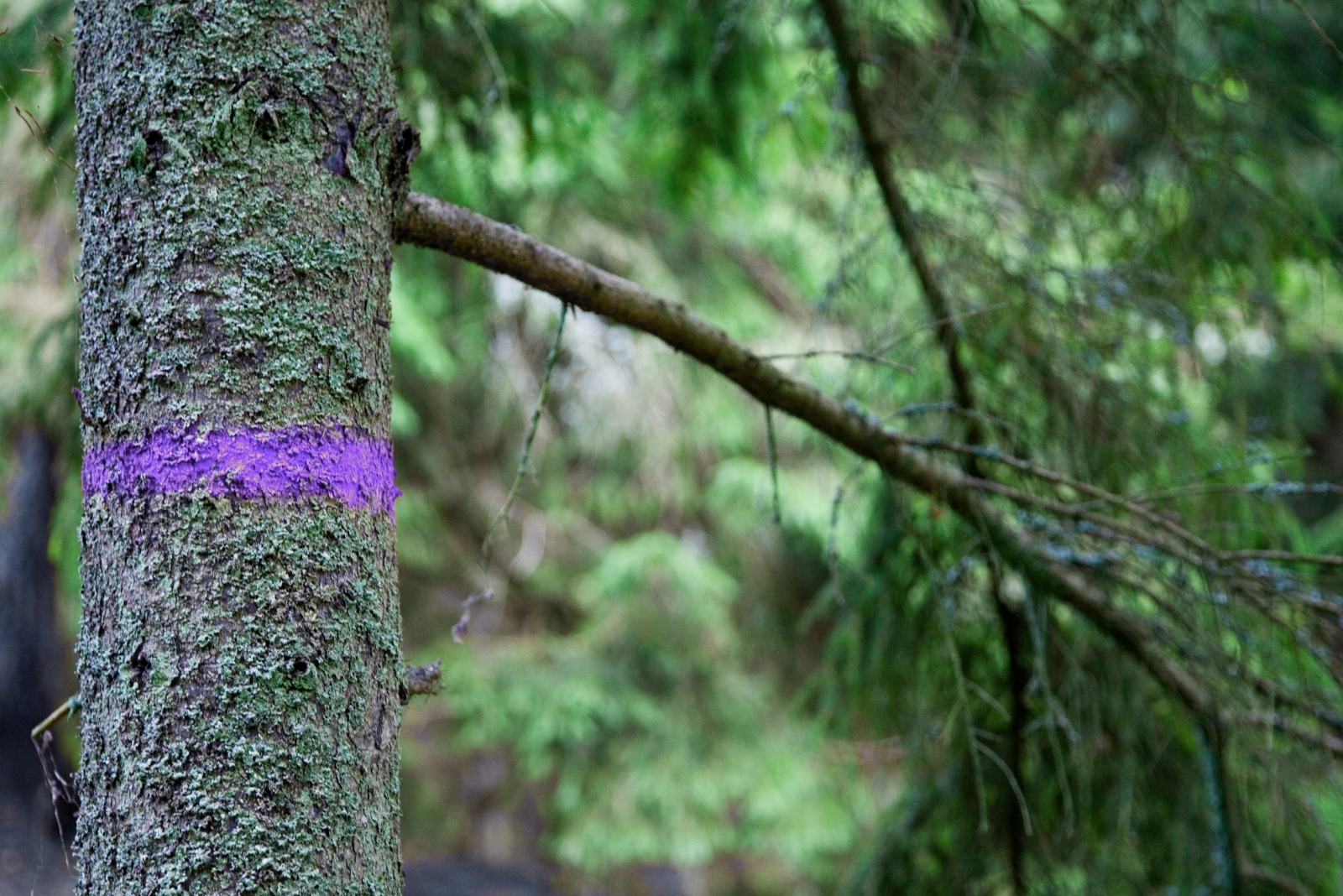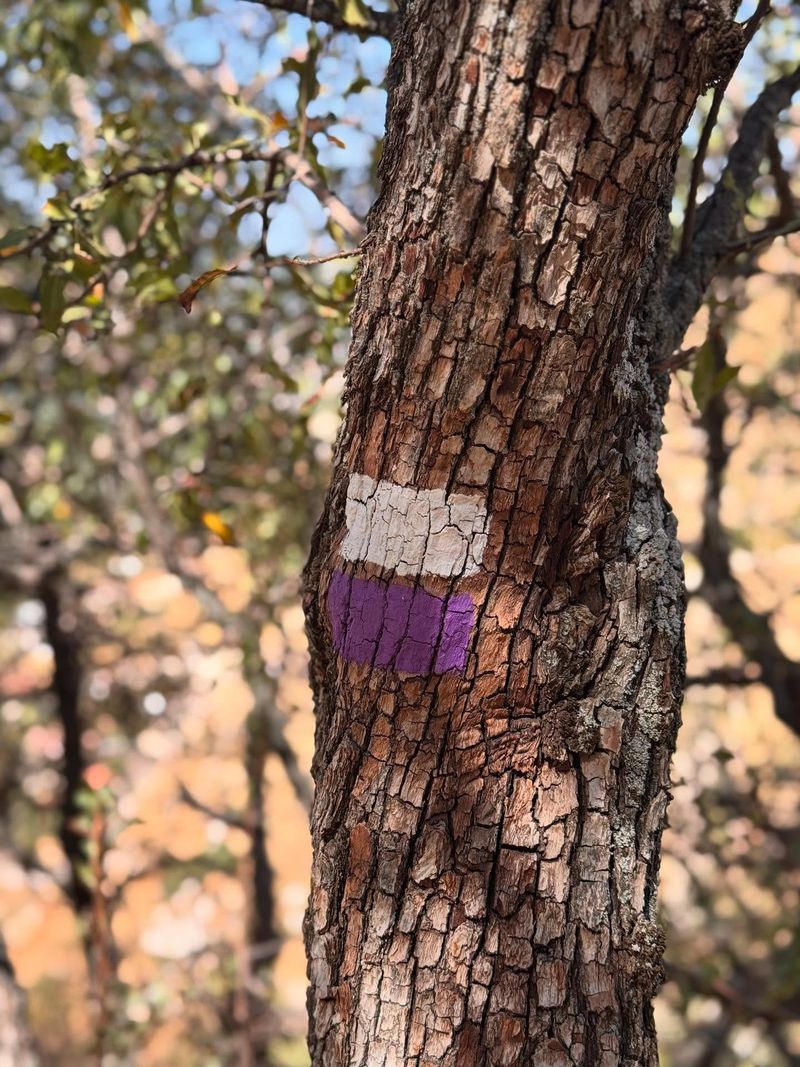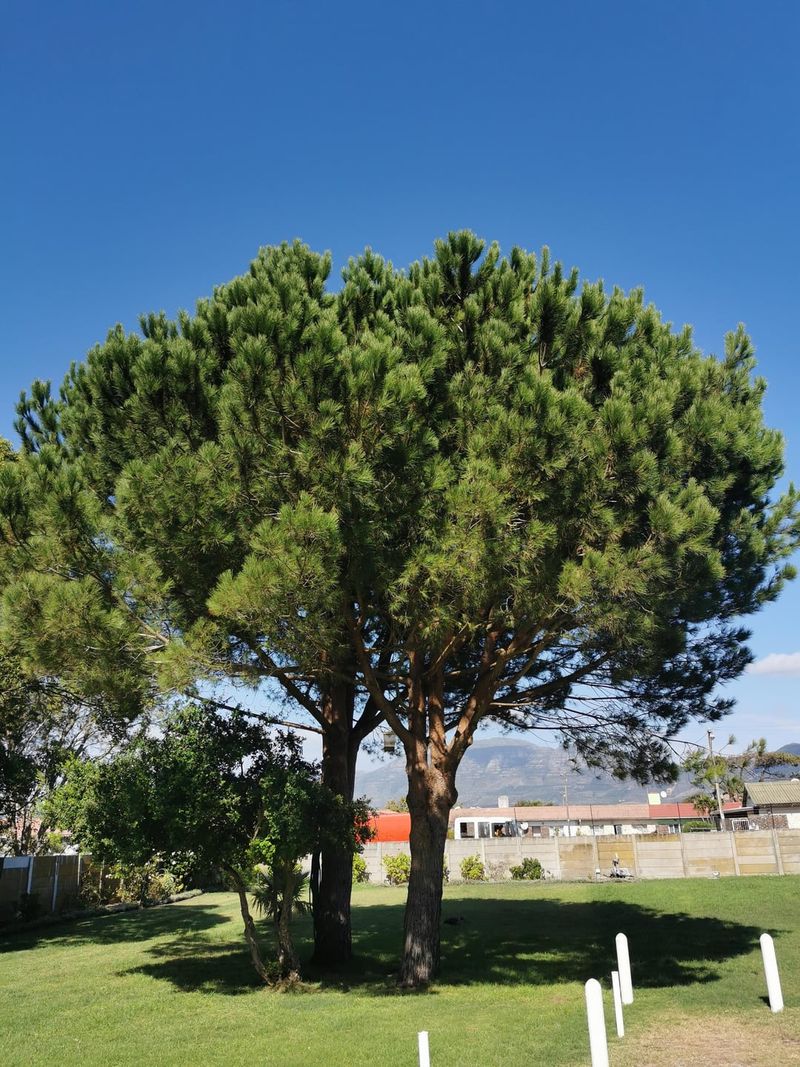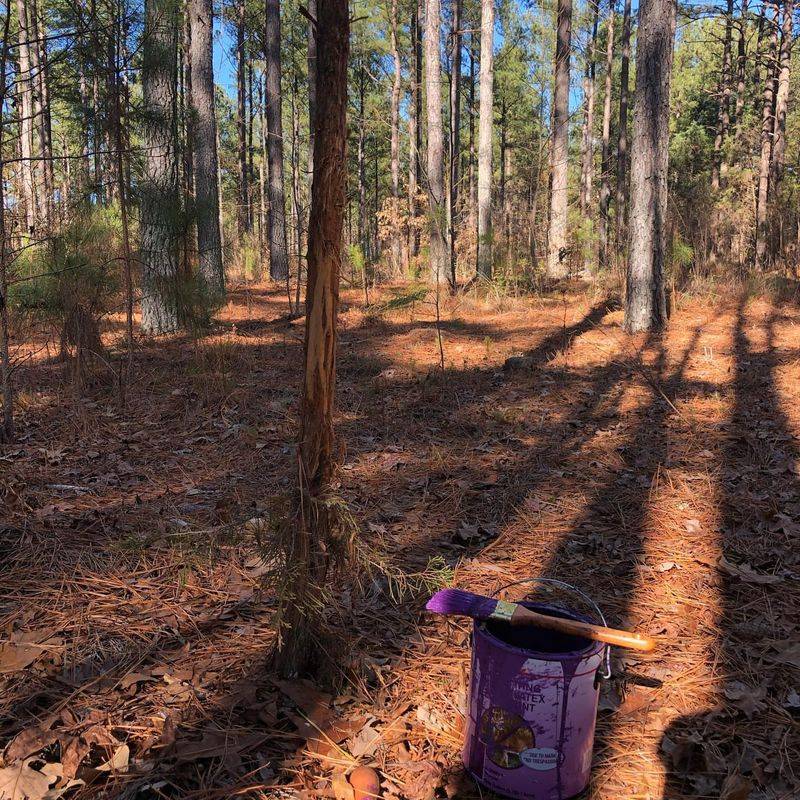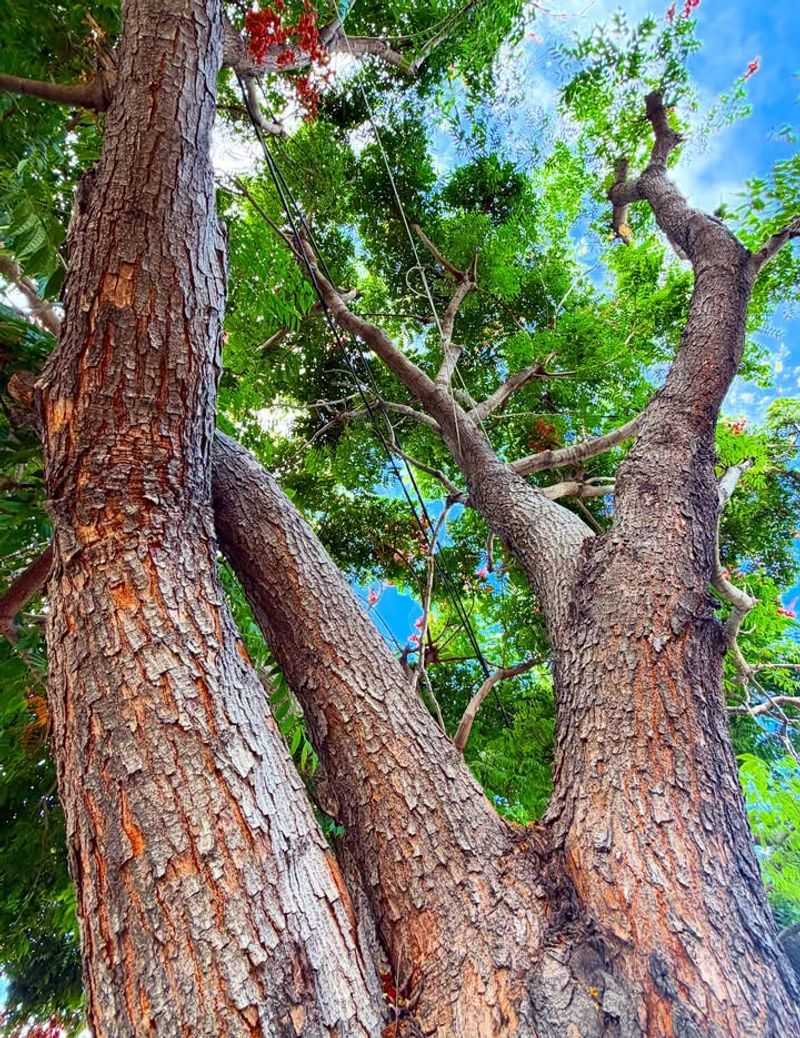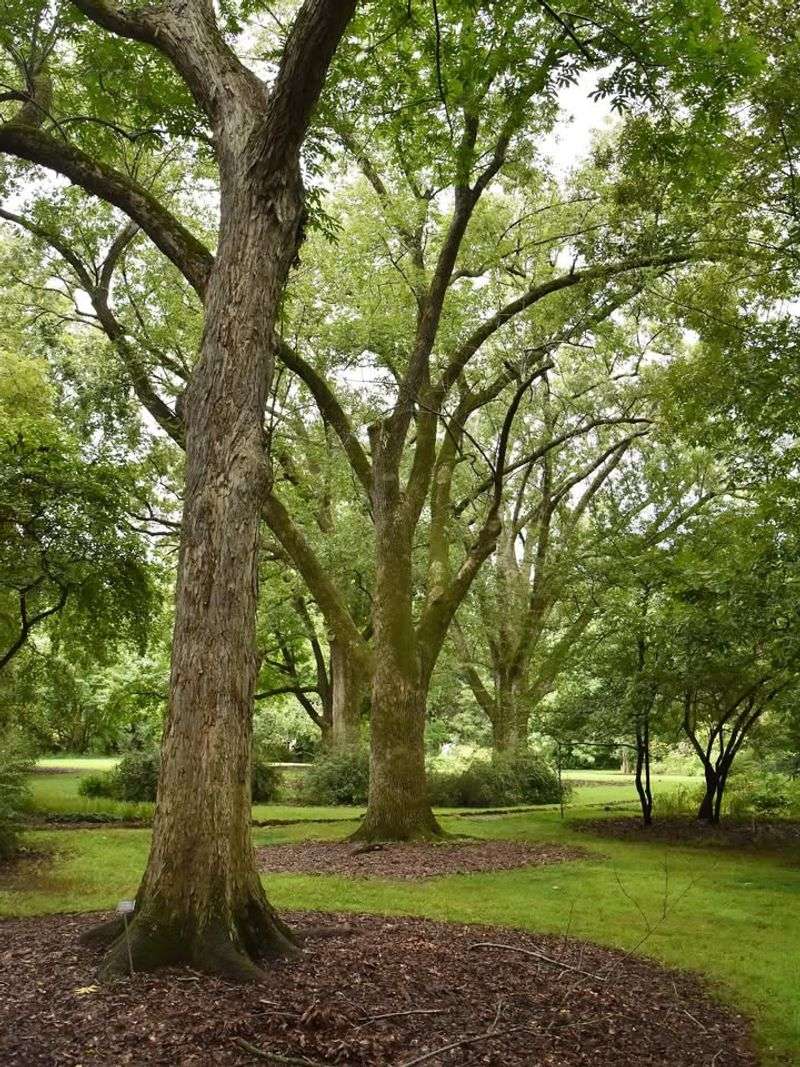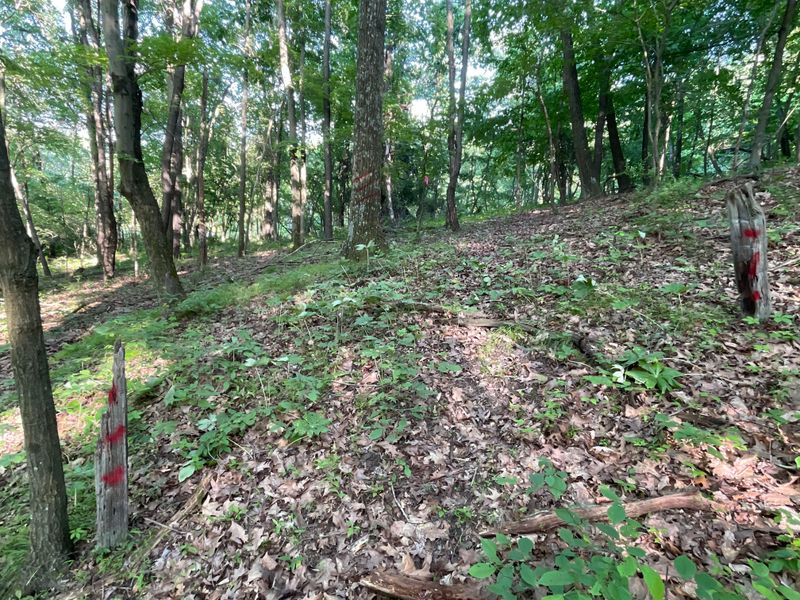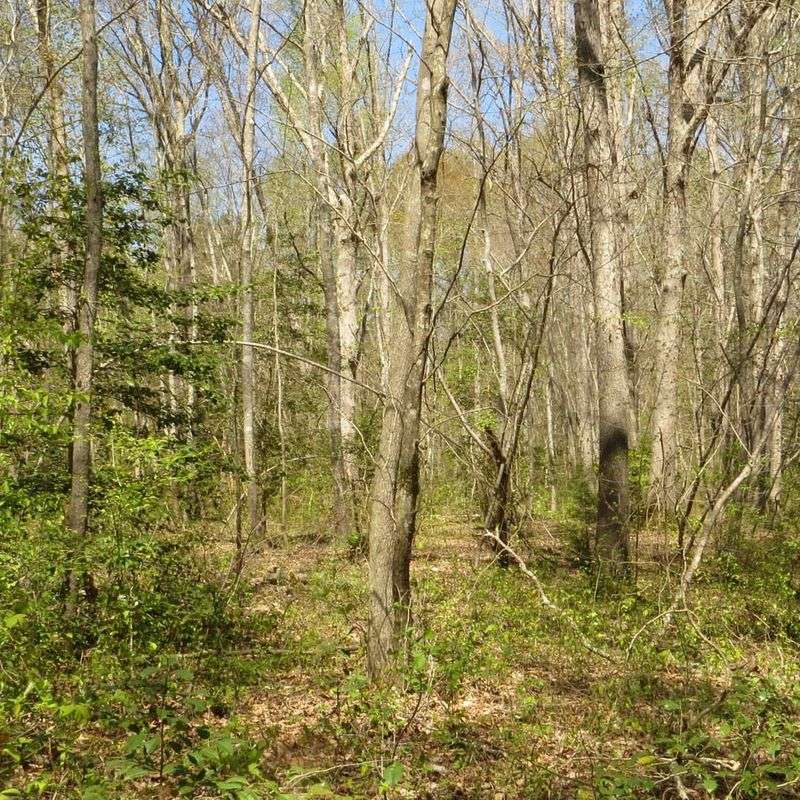If you’ve spotted purple-painted trees in North Carolina, they’re not part of a new trend. There’s actually a very practical reason behind the color.
The first time I saw one, I thought it was an art project! Here’s what those purple markings really mean.
1. No Trespassing Warning
Property owners across North Carolina use purple paint instead of signs to warn people they’re entering private land. It’s cheaper than replacing stolen or weather-damaged signs every few months.
The paint lasts years and costs just a few bucks. If you see purple marks, turn around—you’re not welcome beyond that point.
2. Legal Property Boundary
Landowners mark their boundaries with purple stripes to show exactly where their property ends. North Carolina law recognizes these marks as official warnings, just like posted signs.
You’ll often see them painted on trees along the entire perimeter. Crossing this line without permission can get you charged with trespassing, so respect the paint.
3. Hunting Land Protection
Hunters in North Carolina paint trees purple to keep strangers off their leased or owned hunting grounds. It prevents conflicts and keeps everyone safe during hunting season.
Nobody wants random people wandering through when rifles are out. The purple marks make it crystal clear that the land is actively used for hunting purposes only.
4. Timber Harvest Marking
Loggers sometimes use purple to mark specific trees scheduled for cutting or areas off-limits during harvest. It helps crews know which sections to avoid or prioritize.
In North Carolina’s timber industry, color-coding saves time and prevents costly mistakes. Purple often signals boundaries where equipment shouldn’t cross into neighboring properties during operations.
5. Wildlife Management Areas
Conservation groups and state agencies paint trees purple around protected wildlife zones. These marks tell visitors where special regulations apply or where entry is restricted.
North Carolina has tons of protected habitats for endangered species. Purple boundaries help keep people from disturbing nesting sites or sensitive ecosystems that need extra protection from foot traffic.
6. Preventing Vandalism and Theft
Farmers and rural landowners paint trees purple to discourage thieves and vandals from entering their property. It’s a visible deterrent that says someone’s watching.
Equipment theft is common in rural North Carolina, so these marks serve as warnings. Trespassers know they can face legal trouble, which makes them think twice before crossing the line.
7. Recreational Land Restrictions
Private landowners near popular trails paint trees purple to keep hikers, bikers, and ATVs off their property. North Carolina’s outdoor recreation boom means more people accidentally wander onto private land.
The purple marks protect owners from liability issues too. If someone gets hurt on unmarked property, lawsuits can follow, so clear boundaries matter.

